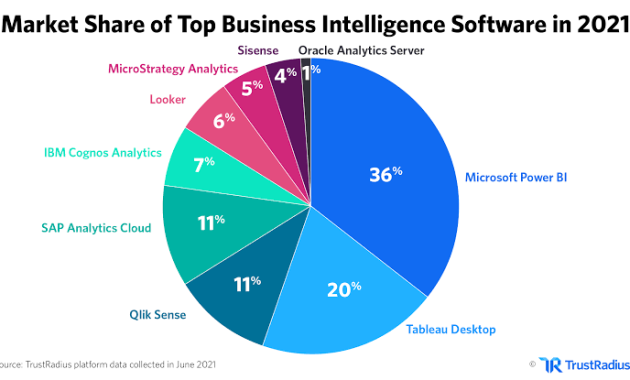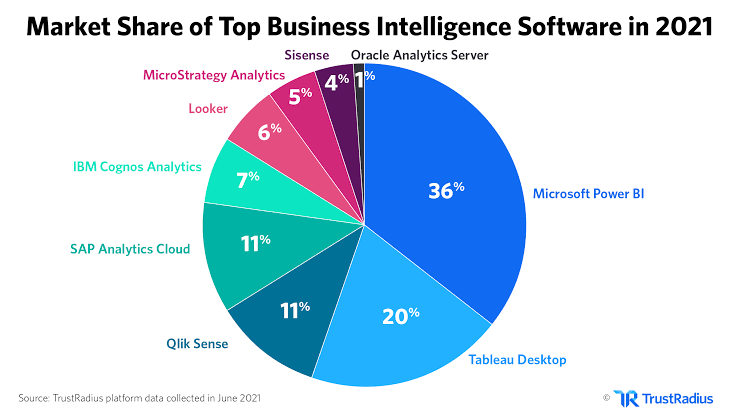
Mastering 3 Business Intelligence Tools For Smarter Insights
In today’s data-driven world, businesses are drowning in information. The challenge isn’t just collecting data; it’s extracting meaningful insights. Business intelligence (BI) tools are the lifelines in this ocean of information. They transform raw data into actionable knowledge. This article delves into three powerful BI tools. We will explore how these tools can help you gain smarter insights. Learn how to leverage them for strategic decision-making.
The ability to understand data is crucial. Businesses need to make informed decisions. Business intelligence tools empower them to do just that. They provide the necessary framework. This allows businesses to analyze data effectively.
The Power of Business Intelligence
Business intelligence is more than just reporting. It’s a comprehensive process. It involves gathering, analyzing, and interpreting data. The goal is to identify trends, patterns, and anomalies. This information helps businesses make better decisions. It also enhances operational efficiency. A well-implemented BI strategy can provide a significant competitive advantage. It enables businesses to anticipate market changes and optimize their strategies.
BI tools play a pivotal role. They automate many of these processes. They provide user-friendly interfaces. This makes data analysis accessible to everyone. Even those without extensive technical expertise can benefit. These tools offer various functionalities. These functionalities include data visualization, reporting, and predictive analytics. This allows for a holistic view of the business.
Tool One: Power BI by Microsoft
Microsoft Power BI is a leading business intelligence tool. It offers a wide range of features. It is known for its user-friendliness and versatility. Power BI allows users to connect to various data sources. These sources include Excel spreadsheets, databases, and cloud services. The tool then transforms and visualizes the data. This enables the creation of interactive dashboards and reports. These reports provide real-time insights. They help users track key performance indicators (KPIs).
Power BI’s drag-and-drop interface makes it easy to create visualizations. Users can choose from various chart types and graphs. These visualizations help communicate complex data in a clear and concise manner. The tool also supports data modeling. This allows users to combine data from multiple sources. They can then create a unified view of their data. Power BI is particularly strong in its integration with other Microsoft products. This makes it a seamless addition for existing Microsoft users. The tool also offers advanced features like natural language querying.
Key features of Power BI:
- Data connectivity: Connects to numerous data sources.
- Data transformation: Cleans and prepares data for analysis.
- Data visualization: Creates interactive dashboards and reports.
- Data modeling: Combines data from multiple sources.
- Collaboration: Allows sharing and collaboration on reports.
Tool Two: Tableau
Tableau is another industry-leading BI tool. It is renowned for its powerful data visualization capabilities. Tableau is known for its ease of use. It allows users to quickly create stunning visuals. These visuals help uncover hidden patterns in data. Tableau offers a wide array of chart types and customization options. This empowers users to create compelling stories with their data. Tableau’s intuitive interface makes it easy to explore data visually. Users can drag and drop fields to create charts and graphs. They can also filter and drill down into data to gain deeper insights.
Tableau excels at data discovery. It allows users to ask questions of their data. It then provides visual answers in real-time. The tool also supports advanced analytics. It includes features like forecasting and statistical analysis. Tableau is often favored for its ability to handle large datasets. This makes it ideal for businesses with complex data needs. Tableau offers various deployment options. These options include on-premises, cloud, and hybrid deployments.
Key features of Tableau:
- Data visualization: Creates visually appealing dashboards and reports.
- Data exploration: Enables interactive data exploration.
- Data blending: Combines data from multiple sources.
- Advanced analytics: Supports forecasting and statistical analysis.
- Data governance: Ensures data quality and security.
Tool Three: Qlik Sense
Qlik Sense is a comprehensive BI platform. It is recognized for its associative data modeling engine. This engine allows users to explore data in new ways. It reveals connections that other tools might miss. Qlik Sense uses a unique approach to data analysis. It highlights the relationships between different data points. This allows users to uncover hidden insights. It also helps them identify patterns they might not otherwise see. Qlik Sense is designed for self-service BI. It empowers users to create their own dashboards and reports. This reduces reliance on IT departments for data analysis. Qlik Sense also offers advanced features. These include augmented intelligence and data storytelling.
Qlik Sense offers a modern, user-friendly interface. It allows users to easily connect to various data sources. These sources include databases, cloud services, and spreadsheets. The tool also provides robust data governance features. These features ensure data quality and security. Qlik Sense is a great choice for businesses. Businesses that want a flexible and powerful BI platform.
Key features of Qlik Sense:
- Associative data modeling: Reveals hidden connections in data.
- Self-service BI: Empowers users to create their own reports.
- Data storytelling: Enables users to share insights effectively.
- Data governance: Ensures data quality and security.
- Mobile BI: Access reports and dashboards on the go.
Choosing the Right BI Tool
The best BI tool depends on your specific needs. Consider your data sources and the complexity of your data. Also, assess your team’s technical expertise. Power BI is an excellent choice for Microsoft users. It is also great for those seeking an easy-to-use tool. Tableau is ideal for businesses. Businesses that prioritize data visualization and exploration. Qlik Sense is a strong contender. It is great for businesses seeking an associative data modeling engine. It offers self-service BI capabilities. Evaluate each tool based on your requirements. This will ensure the best fit for your organization. Consider factors such as cost, ease of use, and integration capabilities.
Before investing in a BI tool, define your goals. What questions do you want to answer with data? Identify your key performance indicators. This will help you evaluate the tool’s effectiveness. Also, consider the long-term scalability of the tool. Ensure it can handle your growing data needs.
Start with a pilot project. This allows you to test the tool. You can then assess its effectiveness before a full-scale deployment. Provide adequate training for your team. This will maximize the tool’s potential. Regular reviews and updates are also essential. These will ensure you continue to extract value from your BI investment.
Implementing Business Intelligence for Smarter Insights
Implementing business intelligence tools is a strategic undertaking. It requires careful planning and execution. The first step is to define your business goals. Determine what insights you need to gain. Then, identify the relevant data sources. Clean and prepare your data for analysis. Choose the BI tool that best meets your needs. Then, develop a data visualization strategy. Create interactive dashboards and reports. These reports should provide actionable insights. Train your team to use the tool effectively. Regularly monitor and evaluate the results. Make adjustments as needed. This will ensure continuous improvement.
Business intelligence tools are powerful enablers. They help businesses gain a competitive edge. By mastering these tools, you can unlock the power of your data. You can make smarter decisions. You can also drive business growth. The key is to choose the right tools. Then, implement them effectively. This will ensure you achieve your desired outcomes.
Consider integrating your BI tools with other systems. This includes CRM and ERP systems. This will provide a more holistic view of your business. This allows for better decision-making. Also, foster a data-driven culture within your organization. Encourage data-based decision-making at all levels. This will maximize the value of your BI investment.
Key steps for implementation:
- Define business goals and key performance indicators.
- Identify and prepare data sources.
- Select and implement the BI tool.
- Develop data visualization strategies.
- Train your team and promote data literacy.
- Monitor, evaluate, and iterate.
Conclusion: Embrace Data-Driven Decision-Making
Mastering business intelligence tools is essential. It is crucial for success in today’s business landscape. Power BI, Tableau, and Qlik Sense offer powerful capabilities. They provide diverse options for data analysis. By embracing these tools, you can unlock the power of your data. You can gain smarter insights. You can also make more informed decisions. Invest in these tools. Invest in training and data literacy. This will help you drive business growth. You can also stay ahead of the competition. The future of business is data-driven. Start your journey to smarter insights today. Business intelligence tools are your key to success. These tools help you unlock the potential of your data. They enable you to make informed decisions. This will drive your business forward. Consider the benefits of each tool. Choose the tool that best suits your needs. Then, leverage it to its full potential. [See also: Related Article Titles]

